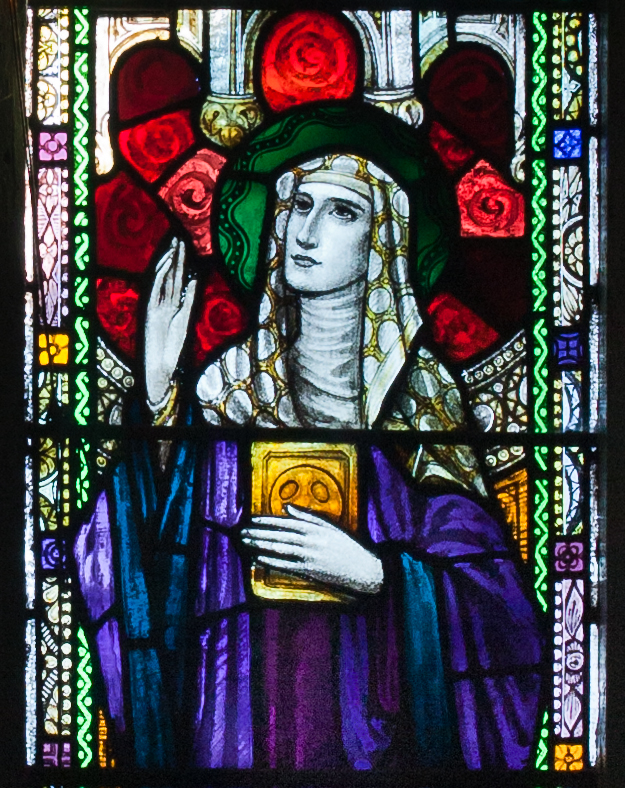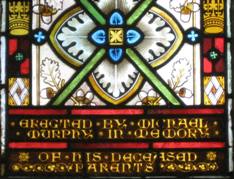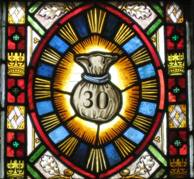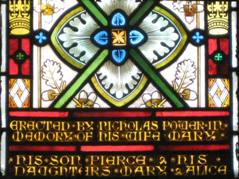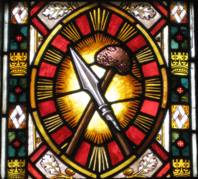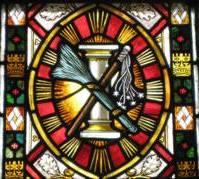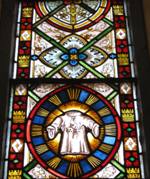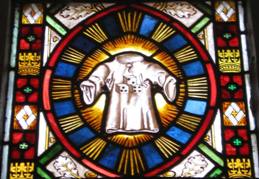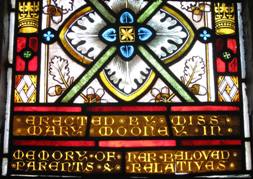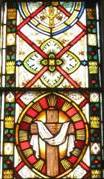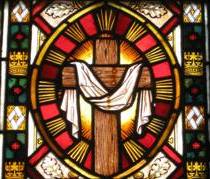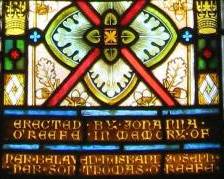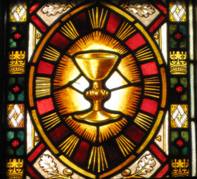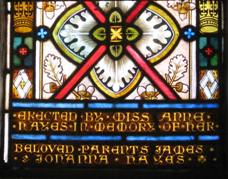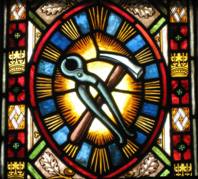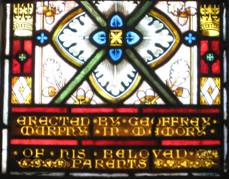The North Transept Windows
There are five windows in the north transept – one on the east wall, two on the gable, and two on the west wall. We will describe them from east to west (right to left). This is the same order as in the menu opposite.
We would be glad to hear from anyone who can give us information on the Red Saint (of the first window) as we know nothing about her (it’s probably a woman). One possibility is St. Brigid. She and St. Patrick (of the fourth window) are our two most important Irish Saints and, perhaps, they are together in the noth transept. Another possibility is St. Ita, another Irish saint who, like St. Declan, belonged to the royal family of the Decies kingdom. She was born c. 480 in County Waterford and was baptised Deirdre. The name Ita, which she later acquired, signified her “thirst for Divine Love”.
The image below is from a stained-glass window in the Church of Our Lady and St. Kieran, Ballylooby, County Waterford.
